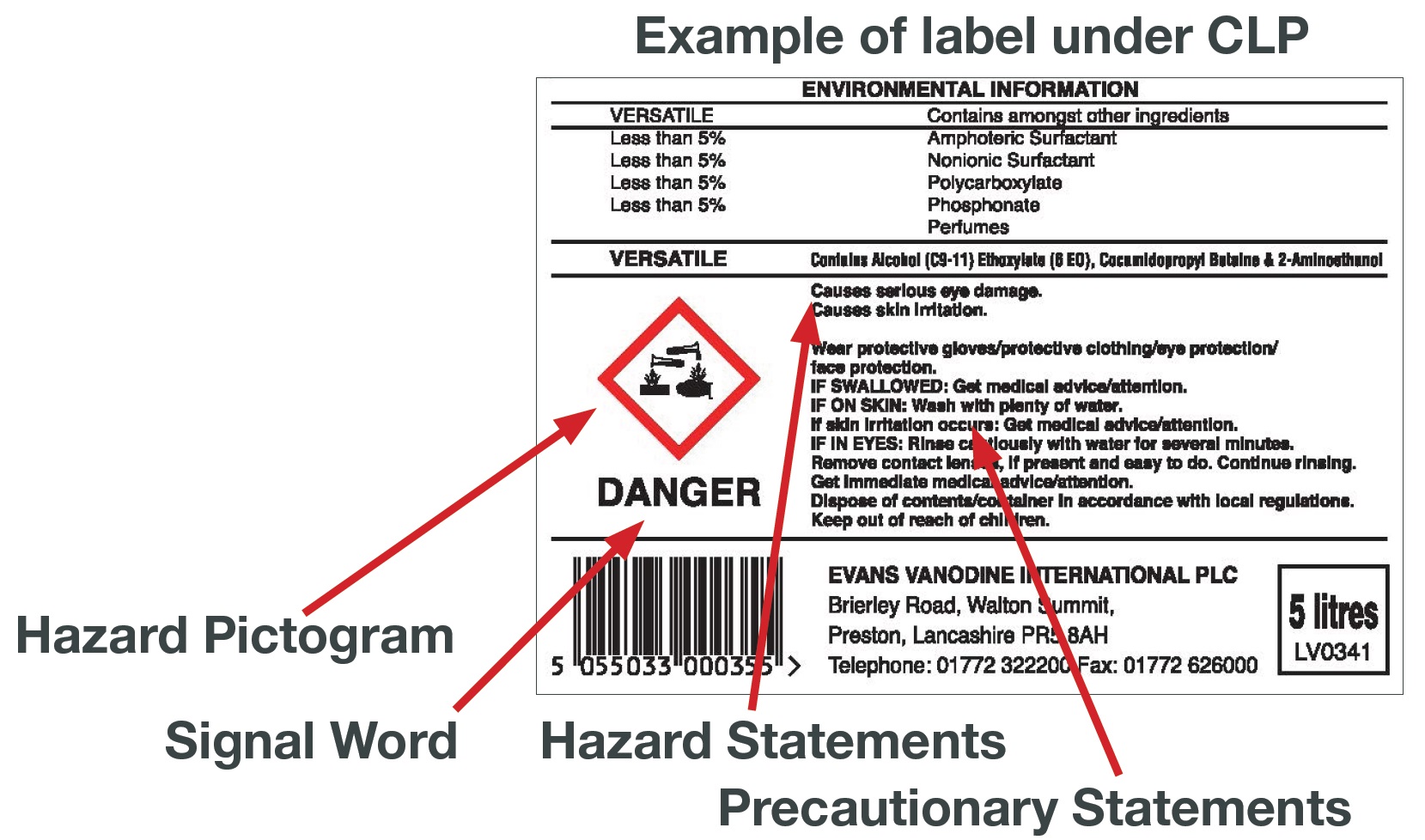Classification Labeling And Packaging Regulation
The Classification, Labeling, and Packaging (CLP) Regulation is a crucial aspect of product safety and regulatory compliance in the European Union. It aims to ensure the proper identification, classification, and communication of hazards related to chemicals and mixtures. This regulation plays a vital role in promoting the safe handling, transportation, and use of chemicals in various industries.
Understanding the CLP Regulation
The CLP Regulation, which came into force in 2009, replaced the previous legislation known as the Dangerous Substances Directive (DSD) and the Dangerous Preparations Directive (DPD). Its primary purpose is to harmonize classification criteria and labeling elements for hazardous substances and mixtures across the European Economic Area (EEA).

The CLP Regulation applies to various chemical substances and mixtures falling under different hazard classes, such as flammability, toxicity, and environmental hazards. It sets clear rules on how to classify these substances based on their physical, chemical, and toxicological properties, thus ensuring that appropriate precautions are taken when handling them.
Importance of Compliance
Complying with the CLP Regulation is not only a legal requirement but also a crucial step towards ensuring the safety of workers, consumers, and the environment. By following the proper classification and labeling requirements, companies can communicate hazards effectively, allowing individuals to take necessary precautions when working with or using hazardous chemicals.

Failure to comply with the CLP Regulation can lead to penalties, legal consequences, and reputational damage for businesses. It is essential for companies to understand the requirements, stay up to date with any amendments, and implement necessary measures to achieve compliance.
Key Points to Know about the CLP Regulation
The Classification, Labeling, and Packaging Regulation consists of several important aspects that businesses and individuals dealing with hazardous substances should be aware of. Here are some key points to understand:
-
Classification Criteria

The CLP Regulation establishes clear criteria for determining the classification of hazardous substances and mixtures. These criteria consider various factors such as physical hazards, health hazards, and environmental hazards. By following the classification criteria, companies can accurately identify and communicate the potential risks associated with their products.
-
Labeling Requirements

The CLP Regulation specifies mandatory labeling elements that must be included on the packaging of hazardous substances and mixtures. These include pictograms, signal words, hazard statements, and precautionary statements. The proper use of these labeling elements ensures that users easily understand the hazards and take necessary precautions.
-
Packaging Obligations

Under the CLP Regulation, packaging of hazardous substances and mixtures must be designed and constructed in a way that minimizes the risk of accidental release, spillage, or contamination. Specific packaging requirements vary depending on the nature and volume of the substances. Adhering to the packaging obligations ensures the safe storage, transportation, and handling of hazardous chemicals.
Frequently Asked Questions (FAQ)
Here are some frequently asked questions about the CLP Regulation:
-
Who does the CLP Regulation apply to?
The CLP Regulation applies to manufacturers, importers, downstream users, and distributors of chemical substances and mixtures within the European Economic Area (EEA).
-
What is the purpose of classification?
The purpose of classification is to identify the hazards associated with a substance or mixture, ensuring that appropriate labeling and safety measures are in place.
-
How often do classification criteria get updated?
The classification criteria may be revised periodically based on scientific advancements and new information regarding the hazardous properties of substances and mixtures.
In conclusion, the Classification, Labeling, and Packaging (CLP) Regulation is a critical framework that ensures the safe handling, transportation, and use of hazardous substances and mixtures. Compliance with this regulation is essential for businesses operating within the European Economic Area (EEA) to protect workers, consumers, and the environment. By understanding the classification criteria, labeling requirements, and packaging obligations, companies can effectively communicate the hazards associated with their products and contribute to a safer working environment.
欧盟clp法规(classification,labeling And Packaging Regulation)法规(eu) 2018/
 Image Source : zhuanlan.zhihu.com
Image Source : zhuanlan.zhihu.com The CLP Regulation (for "Classification, Labelling And Packaging") Is A
 Image Source : www.pinterest.com
Image Source : www.pinterest.com eu clp system regulation labelling classification packaging aligns which ghs
Classification Labeling & Packaging Regulation (CLP) - OperaDetailiNg
 Image Source : operadetailing.com
Image Source : operadetailing.com Regulations – News Flash
 Image Source : www.futures-supplies.co.uk
Image Source : www.futures-supplies.co.uk clp regulations labelling classification globally ghs labelled harmonised futures
Classification Labeling & Packaging Regulation (CLP) | Cidlines Website
 Image Source : backend.cidlines.com
Image Source : backend.cidlines.com CLP (Classification, Labelling And Packaging) Regulation - Peninsula
 Image Source : www.peninsulagrouplimited.com
Image Source : www.peninsulagrouplimited.com regulation clp labelling
European Regulation On Classification, Labelling And Packaging (CLP
 Image Source : www.youtube.com
Image Source : www.youtube.com clp classification packaging labelling regulation european
Atrion First To Deliver Support For EU's New Regulation On
Eu clp system regulation labelling classification packaging aligns which ghs. Clp classification packaging labelling regulation european. Classification labeling & packaging regulation (clp). Clp (classification, labelling and packaging) regulation. The clp regulation (for "classification, labelling and packaging") is a